#slavin architects
Photo

William S. Hawkey, Bathroom, 1972. "Plants, lots of space, and shower with wild and wonderful tiles designed by Alexander Calder make this a room to reckon with in a Connecticut house by architect James Slavin" From "Living with plants; a book of home decorating & plant care" by William S. Hawkey, 1974. https://www.instagram.com/p/COqYEr5Aaig/?igshid=11u1rpg23dqn7
245 notes
·
View notes
Photo
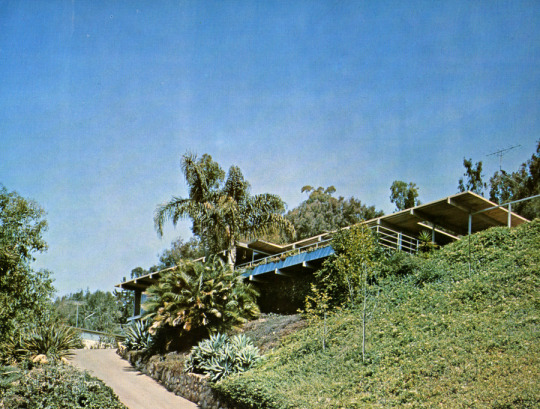
supremeinteriors:
The Slavin house | Santa Barbara, Calif. (1957)
Richard Neutra | Library of Contemporary Architects ©1971
Photo by Yukio Futagawa
0 notes
Text
Structure
ANTHONY WELLER is a professional architectural and interiors photographer whose clients are the best architects, contractors, interior designers, and developers. His images are used to promote clients’ projects. We can find images of architecture, interiors, cruise ships, living spaces, hotels, construction, aerial and industrial in his portfolio.
I choose three of his aerial images as examples of how using different approaches and different features of the structure photography might emphasize the function of the building at the same time being an artistic image. It might be helpful in the realization of my project.
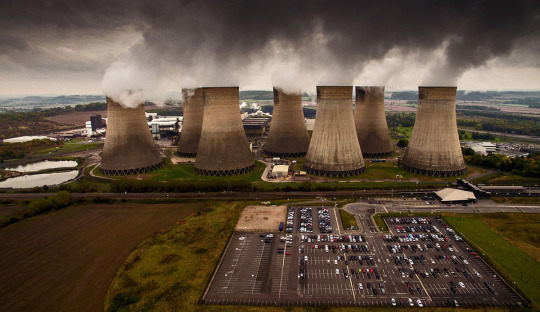
The light and mood on photographs of cooling towers are dramatic. The smoke seems to be so heavy what emphasize the industrial meaning of the structure.

On this photograph, the windmill is surrounded by the green field. As we can imagine soon the grain is growing and will be ready for ground in this windmill. Apart from the function it also includes the esthetic feature. It reminds me of the paintings of Dutch painters.
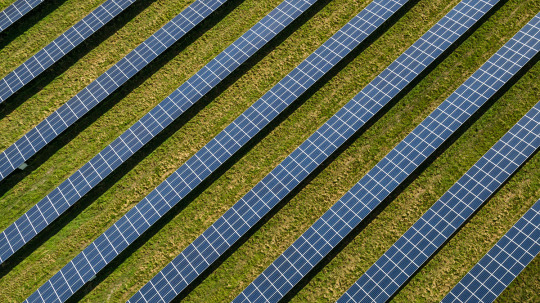
The last one is the image of solar panels. The pattern is used to create this photograph which makes it look a bit abstract. It looks like from space what links the subject with the Sun and the purpose of the structure.
The latest quadcopter drone technology was used to create these photos.

Unfortunately, I won’t be able to use this kind of equipment but I learned how important the view angle and surroundings are on architectural photographs.
References:
https://pixta.jp/photo/17664621
http://www.archimage.co.uk
Matthias Haker is a German freelance photographer and artist. He captures architectural photography, landscape, nature, urban, travel, portraits, and wedding photography.
He uses mostly abandon places for his architectural photography and keeps location in secret to save places from devastation.
I chose one of his interior photos which present a modern interior. The light is used skillfully and creates an abstract image. The contrast between white and color elements attract attention at first but then we have to take a close look and then we see what the structure really is.
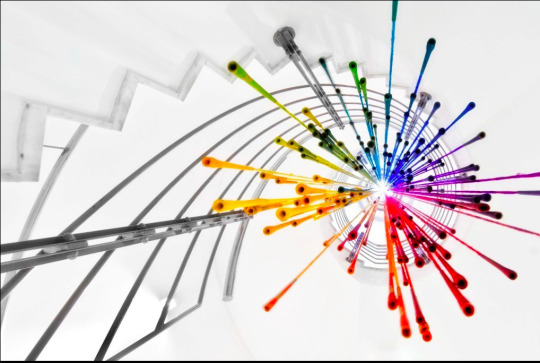
The kind of perspective which was used makes the image dynamic and almost 3D.
References:
https://www.topteny.com
https://publichouseofart.com/nl/kunstenaars/matthias-haker
Roland Halbe is one of the most recognizable architectural photographers, earnings international commissions from architects and agencies. He is a co-founder of Artur Images.
He photographs architecture to capture how it reacts with light. He uses its geometrical and symmetrical forms, surroundings and people to create really stunning images.
Before Halbe start shooting he makes recognition for a few days following the lights in the building.
Equipment: large format camera(ALPA MAXI) with Schneider and Rodenstock lenses from 23-150m.The Photoshop for post-production
I choose three of his images as examples of how skillfully he uses light and geometrical forms.


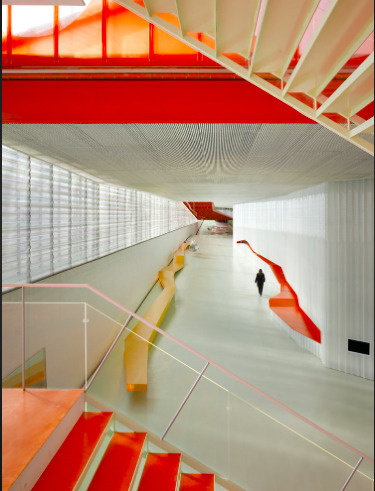
References:
http://rolandhalbe.eu
https://www.complex.com/style/2013/02/the-25-greatest-architectural-photographers-right-now/randy-scott-slavin
https://www.archdaily.com/469030/architectural-photographers-roland-halbe/
Planning:
All these photographers and their works might be very helpful in my project. I am going to shoot a bridge for my exterior images and the college building as the interior. I would like to use all the advantages of natural light. I understand now how significant meaning the recognition of the structure has. I am going to make some test shots from both locations to establish when is the best time of the day for shooting. Bracketing would be helpful.
I am planning to emphasize the geometrical forms of the structure, function and optimize the use of the light.
Equipment:Canon 1300d,wide angle(50 mm Canon lens) and telephoto lens(70-300 mm Tamron),tripod,light meter.I am going to use the 50mm lens due to the angle of view is the closest to the human eye and so like the human eye doesn’t produce distortion.
Lens distortion is when a lens produces curved lines where straight lines shoud be. There are two the most common types of distortion.

Barrel distortion is where straight lines bend outward from the center of the image. The lenses with a wide field of view (wide-angle lenses and zoom lenses) produce images with this kind distortion when the camera is too close to the subject. The distortion is most common in architectural photos(due to straight lines)

Barrel distortion correction
1.Photoshop- lens distortion correction filter
2.Special ”Tilt and shift” lens (designed for architectural photography, expensive)

If we can’t use this expensive lens there are a few ways to minimalize the barrel distortion effect during the shooting.
1. Try to avoid shooting buildings and objects that have clean, straight lines with an extreme wide angle lens
2. Keep any straight in the image as close to the center of the lens as possible
3.As you shoot an object take several photos of the same object using a variety of zoom lens magnification levels
The other one is pincushion distortion when the straight lines bend or “pinch’ inward from the center of the image. Usually, it happens with telephoto end of a zoom lens such as 70-200mm.

Pincushion distortion correction
1.Photoshop - lens distortion correction filter
How to avoid it during the shooting
1. Try to avoid shooting objects with straight lines. If you have to try to keep them as close to the center of the frame as possible
2. Try to avoid shooting at the maximum magnification of the telephoto zoom lens, move closer to the object.
3. Move to a different location and see if a different perspective of the object reduces the pincushion distortion effect
There is also perspective distortion when the photographer stays too close to the building which is going to shoot the subject might look too large or distorted in comparison to the other objects in the background.
Perspective distortion correction
1.Photoshop - lens distortion correction filter, Adaptive wide angle tool
In camera-Keep your focal plane at 90 degrees to your subject(it may help in landscape photography but might be difficult in architectural to achieve )
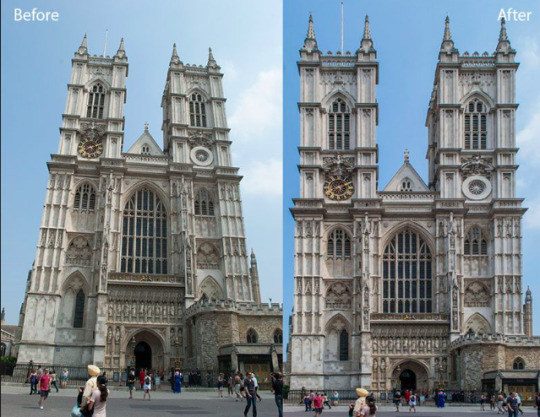
References:
https://clickitupanotch.com/lens-distortion/
https://www.imagenesmy.com/imagenes/barrel-distortion-and-pincushion-2c.html
http://www.estiasis.com/category/glossary/barrel-distortion-pincushion
https://imgarcade.com/perspective-distortion-photography.html
https://photo-works.net/image-distortion-correction.php
https://www.lifewire.com/what-is-barrel-lens-distortion-493725
https://www.canon.co.uk/lenses/ts-e-50mm-f-2-8-l-macro-lens/
https://digital-photography-school.com/use-photoshop-to-correct-perspective-distortion-of-buildings-in-your-images/
I’ve made some test shots of the indoor of the college. Unfortunately, the light was quite flat that day but it gave me an idea what I would like to photograph
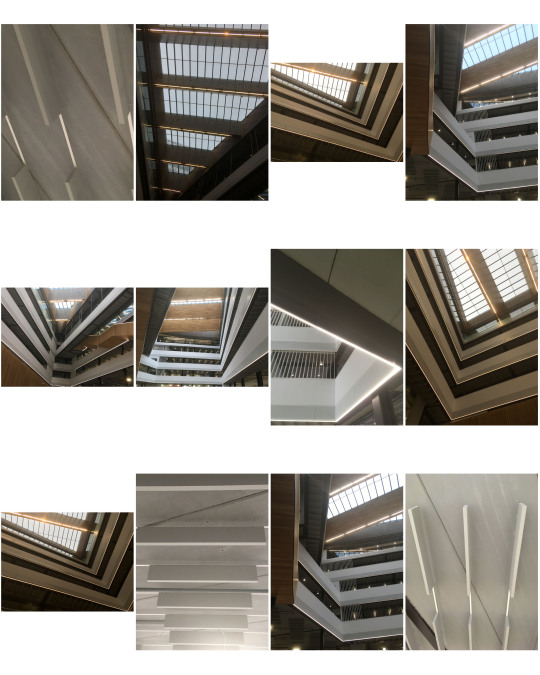

My other subject is the bridge. These test shots allowed me to recognize the best time of the day when the Sun is in the best position for my shots. It was also very helpful to see the background and recognize all distracting elements which I should avoid during shooting.
The time between 11-12am when the Sun illuminates the building in the best way.
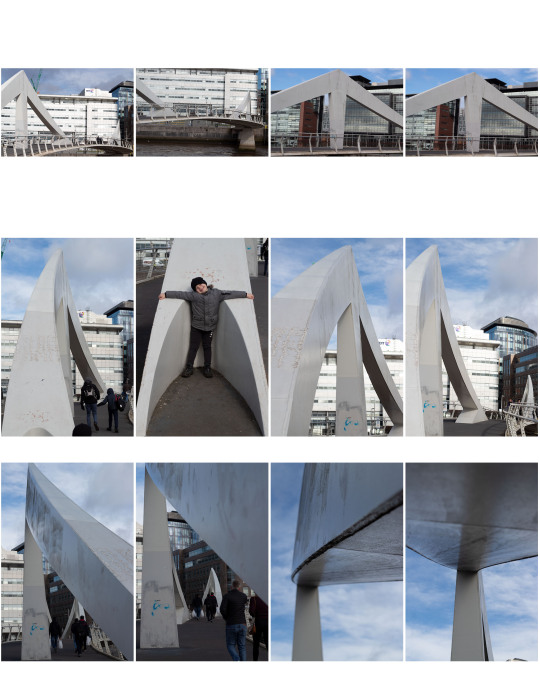



I’ve taken some test shots today but unfortunately, the light was to flat to achieve proper quality. I am going to reshoot using a tripod because it’s needed especially in the inside of the building when the part of the light is blocked. I also decided to stick only with college building what will give my project a more unitary view. During today’s research, I discovered so many interesting shapes and angles of view which give the range variety of unique images.
The final images of my project. I edit images a bit changing saturation, exposure, and contrast. I also fixed distortion use tools in Camera Raw Filter.

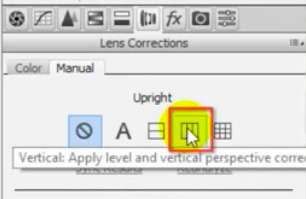



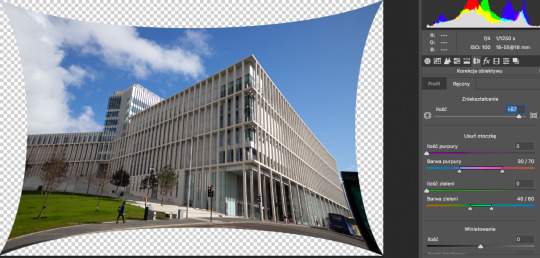
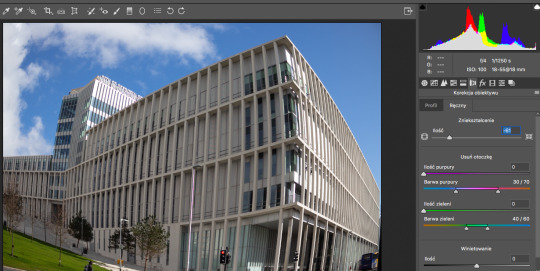
My final images for structure project

EVALUATION
The project Structure was quite demanding. At the very beginning, I planned to photograph 2 different objects- the college and the bridge.
Unfortunately, the weather which was the decisive factor made it very difficult. The sunny day with strong, bright light giving strong contrast would be perfect for that project. Unfortunately, most of the days were rainy or cloudy with flat light.
Due to difficulties, I decided to photograph only college building what was more suitable for me and give me more opportunities to capture proper images.
During this project, I have learned to always check my equipment. When finally the weather was perfect for shooting and I came for location turned out that I forgot to take my memory cards. It was an incredibly stupid mistake and a very annoying experience.I wasted time and good weather conditions.
I take my shoots accidentally because the forecast for that day did not predict sunny day. I was counting on lucky luck. The light on my images is not so good as I would like to but it is good enough to take images satisfactory for me.
I used 50mm EF 1.8 Canon lens and 18-55mm Canon lens, self-timer, and a tripod. The tripod was helpful especially inside the building where the light was much worse and allow me to reduce the blur.
I tried to find the proper angle and crop the images in an interesting way. I took the photo of the whole building.I used for that 18mm lens, wide angle which caused distortion I fixed it in Photoshop. In Camera Raw is a tool which allows for perspective correction. The horizontal and vertical perspective might be corrected also image level and lens correction might be made.
The lens correction allows for barrel and pincushion distortion which might be helpful to balanced distortion of the image.
Taking images inside the building was demanding due to worse light.I was not able to achieve as strong contrast as I would like to.
The structure project was quite interesting though and I really liked this kind of photography. I had taken architectural photographs only using film camera so far. I definitely would like to take more photos of structures.
I love the abstract forms which might be created if the structures are captured in unconventional angle.
I have visited a nice small village, with lovely old houses recently.It gave me an idea about a personal project with I would like to realize during the summer holiday. The structure project experience was definitely helpful and gave me valuable experience.
The most important aspect of the structure project was light. It is significant to check the forecast weather before shooting. I have learned also how important is recognition on the location even if we are going to shoot in the place well known to us. It gives the opportunity to find out about the Sun position on particular times of the day and how it affects the building.
Also when I was shooting indoor the Sun gave a much better quality of the image, produced shadows which gave the images deeper. The stronger light gave images more contrast and details.
This time I was limited by time but if I would have the opportunity to photograph architectural structures again I am would definitely choose the best time of the day to use optimally the advantage of the light.
0 notes
Text
Structure image research

Randy Scott Slavin blends together loads of images to create one unique cityscape that, rather than avoids distorted perspective, accentuates it, giving a completely different look to his subject.
Slavin lit all his images with the sun in front of the buildings, meaning all the details of the buildings are shown. The sun appears to be quite low for a few of them, giving the final image a nice warm look.
A mix of angles have been used in the images that have been merged to create the final photograph. It looks as if the main, largest building was shot from a very low angle, whereas some of the furthest away buildings in the photograph appear to have been shot from a higher angle, slightly looking down on the buildings.

Bas Princen chose a rather dull day to shoot this image, normally I don’t think this would work well for architecture photography but in this case I think it really does. The dull sky and surroundings allow for the focus to be completely on the building.
I’m not very good at spotting slight perspective distortion in images but I would say this photo has probably had some sort of corrections applied to it.
Princen uses reflections off of the building to carry the horizon line right through the image, integrating the building in to its surroundings whilst still keeping the focus completely on the building, I think this was very cleverly done.
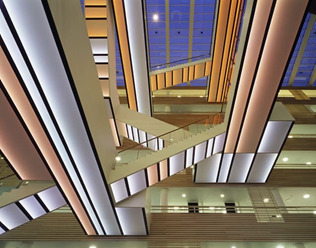
This image by Adam Mork really appeals to me. He’s chosen to use a long exposure to interestingly light the interior of a building whilst also showing a bit of sky. The blue from the sky, most likely dusk rather than dawn, adds a nice bit of colour in to the image.
I really like the angle Mork chose to shoot at. The thick black lines are very striking, they really make the image stand out.
I know the image was taken from a low angle looking up but the more I look at it the more I can sort of see it as if it was a high angle looking down, the floor being the balcony area, the windows being at the side rather than the roof and almost like a modern art display of pillars and side stairs.
I imagine this is exactly the way the architect would like his work to be viewed.
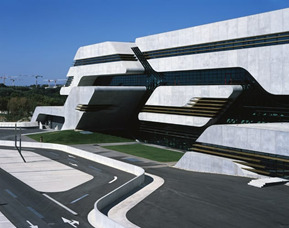
Helene Binet chose to photograph this rather interestingly shaped building on a sunny day, with the sun shining on the front of the building, this allowed her to capture the texture of the building and all its details.
Binet also incorporated part of the buildings surroundings in to the image, the shapes on the road in front of the building are very similar to the building itself, as well a being the same colour and probably made from the same material, this ties the building and its surroundings together nicely.
It looks like Binet has used some sort of distortion correction on this image.

The composition of this image by Hufton + Crow is really nice, all the lines from the building lead the viewer to look further in to the centre.
I think this was taken midday, meaning the sun was high enough to throw light on to every part of the building, it also meant that some parts of the image are slightly hazy. I think the sun would have been somewhere in the top right of the image, slightly overexposing the very top curves on the left side.
I like that the image has so many people in it, not only is it showing off the design of the building, but having the people in the shot also shows it has a function.
0 notes
Text
Everything You Need to Know About Roof Wind Damage Repair in South Windsor CT
When the weather gets chilly after summer's warmth, you can expect the instability to cause hurricanes and cyclones. Unfortunately, in South Windsor CT, these sometimes evolve into strong-winded rainstorms that can uproot roofing material and afterwards require intensive roof wind damage repair.
The repair procedure for roof wind damage is similar to any and all existing processes. However, as any experienced and knowledgeable South Windsor CT roofing contractor knows, identifying the full details of the roof's condition is the key to proper roof wind damage repair. Dry Home has an excellent list of areas to inspect below.
Perform an Outdoor Inspection
Look for missing and damaged shingles (damaged shingles might be curled, cracked, or torn) on your roof or around your property. If this type of damage is localized (i.e., it covers less than 30 percent of the entire roof), roofing repairs might be able to address the problem. More extensive damage might necessitate roof replacement. Also keep in mind that not only the roof itself, but the chimney, ventilation pipes, roof flashing, gutters and fencing can also become damaged. Be sure to inspect them for damage as well. If you suspect that your roof is damaged, here is a basic list of what to look for:
Composition shingles: curling, loss of granulation, broken, damaged or missing shingles
Wood shingles/shakes: Mold or decay, splitting or curling
Flat roof: Obvious patches, cracks or tears, several blisters and/or wrinkles (also check patched areas from inside the attic)
Flashing: Tears, buckling around roof penetrations
Roofing cement: Excess cement, crumbling
Soffits and fascia: Decay, stains
Soffit and ridge vents: Clogged or damaged vents, flashing and shingles around them curling or missing
Gutters: Decay or rust, leaky seams, loosely attached to structure, bent or sagging, missing sections of gutter or downspout, filled with debris. Clogged gutters can easily freeze shut and cause excessive weight on gutter fasteners, ice dam conditions, and slippery walks below.
Chimneys: Leaning, loose or missing flashing, damaged bricks, cap or cracked joints. Chimney flashing is especially prone to tearing because a chimney settles independently from the house. (Continued)
Prevention is always better than any cure, and it's less expensive too. Preventative measures to reduce or even eliminate material uprooting and eventual roof wind damage repair exist. However, it begins right at the start -- the moment your architect designs your roof and the roofing contractor installs it in place.
Roof design plays an integral role in preventing strong winds from blowing off a roof. Fortunately, the roof design doesn't have to make your roof installation expensive to resist strong winds. LSU AG Center has a good list of roof design characteristics that can resist strong winds.
Roof Wind Damage Repair Prevention: Design considerations
youtube
Hip roof style: Hip roofs (four-sided roof design) are more aerodynamic and inherently more resistant to uplift forces of high wind than gable end and other roof designs.
Gable end walls braced: If your home has a gable roof (two-sided pitched roof), the end wall takes a beating during a hurricane, and typical framing methods create a vulnerable “hinge” line at the joint between levels. If not properly braced, it can collapse. Properly bracing gable end walls can prevent wind from pushing or pulling the gable end at that weak point.In new construction, this can be provided with code-specified bracing details – which may include lateral bracing and blocking of ceiling joists, extra metal strapping, structural panels under the joists and sometimes cross bracing of ceiling to roof framing.
A simpler alternative to bracing is to use a “balloon framing” method for gable end walls; this refers to using continuous studs or columns from the foundation to the roof without a break. This method is less labor intensive, but tall spans may need larger lumber or closer spacing than for other walls. (Continued)
However, the roof design is only 50% of the preventative measures you can take to prevent roof wind damage repair. Using the right materials allow you to clamp down your roof deck with their weight and density.
Luckily, these roofing materials are available from any supplier, and they're not too expensive. Traditional asphalt shingle roofing is one of the best wind-resistant materials to prevent costly roof wind damage repair. Goodrich Roofing has a list of the best materials below.
Roofing Materials Resistant to Roof Wind Damage
Asphalt Shingles
The most common type of residential roofing in the country, asphalt shingles are used in over 90% of U.S. homes. Available in different styles and colors, these roofing materials are tested to perform well against fires and storms. In fact, the standard types can handle 60- to 80-mile-per-hour wind speeds while architectural shingles can withstand winds of up to 110 miles per hour.
Metal
This roofing material offers better resistance to wind damage, minimal upkeep and longer lifespans. It can perform well in any weather, regardless of severity. Installation requirements call for fewer sheets, which reduces the likelihood of wind passing through openings within the roofing system. (Continued)
Remember, preventative measures that avoid costly roof wind damage repair require the use of an experienced and knowledgeable roofing professional. If you have yet to find a reliable roofer, you can count on Slavin Home Improvements to help. With over 10 years of roofing experience and serving residential properties across South Windsor CT, we're confident in delivering what you need. Allow our team to help -- call us today!
Read More Here: Everything You Need to Know About Roof Wind Damage Repair in South Windsor CT
Roofing Contractor in Manchester CT | Slavin Home Improvement
540 Center Street
Manchester, Connecticut 06040
860-970-1813
https://goo.gl/maps/yKGTecmfEtL2YAA46
0 notes
Text
Curacity Announces Dwell Partnership
NEW YORK, June 6, 2019 /PRNewswire/ — Curacity, a data analytics company serving the hotel industry, announced its partnership with Dwell, a publisher reaching architects, designers and enthusiasts. Dwell will be expanding its already robust content offerings to write about well-designed hotels thanks to this partnership with Curacity, whose end-to-end content measurement and monetization platform unlocks previously unattainable revenue to publishers.
Dwell will write about the hotels their editorial team wishes to write about. With its proprietary data technology, Curacity identifies consumers that book a hotel up to twelve months after engaging with Dwell hotel editorial content, and converts that into commissions for Dwell. Unlike outdated last-click methodologies, affiliate programs, and cookie-tracking, Curacity technology will enable Dwell to measure the full financial impact of their content in a way that drives incremental, scalable revenue. On average, publishers who have been working with Curacity for one year have tripled their hotel editorial coverage.
“Curacity is excited to partner with Dwell, as they are a leader in discovering and writing about outstanding design,” said Nick Slavin, President and Co-founder of Curacity. “Our product suite creates a first-of-its-kind financial feedback loop for publishers and hotels. We are thrilled that Dwell is investing more heavily in hotel content because we can measure, monetize, and drive hotel commissions to the source, like Dwell, that built the demand for the hotel booking. Simultaneously, this turns Dwell’s hotel content into a distribution channel for the hotels being featured.”
“Dwell is a long established home design magazine that successfully moved into the digital age, and our partnership with Curacity continues our brand’s innovation,” said CFO of Dwell, Nicole Wolfgram. “Being able to seamlessly measure how our editorial coverage converts to commerce is a game changer for any publisher or editor.”
Dwell is in excellent company, joining the prestigious group of other Curacity publishing partners that include Conde Nast Traveler, AFAR, Inside Hook, Fathom and more.
About CuracityCuracity is a data analytics company focused on the travel sector. The company’s first product to-market is Omni-channel Revenue Attribution (“ORA”), a data measurement tool that serves hotels. ORA helps hotels drive, measure and analyze how digital publishing content converts to direct bookings, while also allowing publishers to measure the connection of every booking that results from their content within a window of up to 12 months. Mike Keriakos, Co-Founder and CEO, is a digital marketing veteran who formerly co-founded Everyday Health. Nick Slavin, Co-Founder and President, has a background in real estate and hospitality private equity. Curacity is headquartered in New York City and Stamford, CT.
SOURCE Curacity
Related Links
https://www.curacity.com
The post Curacity Announces Dwell Partnership appeared first on The Chestnut Post.
from The Chestnut Post https://www.thechestnutpost.com/news/curacity-announces-dwell-partnership/
0 notes
Text
From Ansel Adams to Stephen Shore: famous photographers shoot their favourite food
After 40 years, a cookbook by some of Americas best-loved photographers is being published for the first time
Perhaps the salient thing about food, from a photographers point of view, is that it doesnt last. Even the most gorgeous, curvaceous pepper those shot by Edward Weston in 1930 are among the cameras greatest still lifes must either be chopped up and eaten, or rot.
Back in 1977, Deborah Barsel, a bored employee at George Eastman House in New York, home to the USs finest photography collection, had the idea of asking artists to contribute food-related pictures and recipes to a cookery book. Nearly 40 years on, the project has been brought to fruition after a box of letters and pictures from the likes of surrealist legend Brassa and William Eggleston, who captured the US south, was discovered in a store room.
Its a great idea whose time has come. Quality cookbooks in 1977 were more likely to be illustrated with sensitive line drawings such as John Mintons for Elizabeth Davids classics on southern European food. Today, photography and cookery are inseparable. I recently went to a restaurant whose lavishly photographed recipe book I own. It was a chance to order dishes whose pictures I have been looking at for years, including ones that are too fussy to cook at home. Damn, no cod cheeks in the fridge! So I ordered the cod cheeks and, yes, they were as good as their photograph.
Now, when I look at the picture, Ill remember the taste, the time, the fun. Foods impermanence makes it the stuff of richly associative memories such as these. I wish I had been at the New York restaurant where Stephen Shore photographed the aftermath of a meal in 1972. It must have been a good one. Black coffee, and a cigar. The sharp colours tell of a meeting, a conversation, maybe business, maybe love: all the social stuff of city lunches. Or was he eating alone?
Real character in photography comes from a precise, rich engagement with the suggestiveness of the physical world. That cigar in Shores ashtray, the cherry garnish on a Neal Slavin hotdog. Egglestons cheese grits casserole, using half a pound of Velveeta cheese, sits alongside his 1976 photograph of an empty diner, whose bright yellow walls evoke the cheese he likes to melt all over his down home food.
As with most of the contributors, Eggleston shares a fondness for ingredients that are now practically illegal on health grounds: this is the 1970s, and the dishes are steeped in the saturates of the time graham crackers, frozen macaroni cheese. This is a cookbook to look at rather than use, if you value your arteries.
Food is not a fetishistic obsession for great photographers, it seems, so much as a movable feast, a theatrical moment in the midst of everyday life. Eileen Cowins vegetable cheese casserole is just lots of veg baked in ricotta: fast and easy, to suit the chaotic lifestyle portrayed in her shot of a kid watching TV from the same table as a couple trying to have a candlelit dinner (pictured overleaf).
Photography is the art of modern lifes flux; the moments that make the best pictures may not be food on a plate so much as pots in a sink, people at a counter, coffee on a stove. Above all, food is social: in Barbara Cranes rawly coloured snapshot of people passing slices of pizza at a party, the sharing is what its all about.
When this lovely project was launched, photography was at a crossroads: modernist masters such as Ansel Adams were still composing pictures of great formal beauty while younger photographers were recording more random scenes. Artists such as Ed Ruscha were exploring the cameras power as a conceptual tool. These pictures allow us to savour a great moment, melting in the mouth like Velveeta cheese.
Pavlova: Grant Mudford
There are many things from Australia I remember with great affection, partly due to their absence elsewhere in the world. I truly miss: old Holdens (cars), gladioli (flowers), galas and kookaburras (birds), Ayers Rock (natural monument) and the bush (outback country). Australian cuisine on the whole is forgettable, with one notable exception: the pav! Its named after the Russian dancer Anna Pavlova, who in 1926 performed Swan Lake in Australia. Description: a soft, marshmallow-centered dessert with crisp, lightly browned meringue crust, topped with whipped cream and fresh fruit.
Egg whites use at least 8
2 rounded tbsp sugar per egg white
1 drop of vinegar per egg white
Heat the oven to 150C/300F/gas mark 2. Beat the egg whites until stiff. Add the sugar gradually while beating; add vinegar. Cover an oven tray with greased paper. Spread the mix out in a disc (nine or 10 inches in diameter), put in the oven, and turn down the heat to 110C/225F/gas mark . Bake for one and a half hours.
Add toppings just before serving: whipped cream, strawberries, pineapple, cherries, kiwi and other fresh fruit.
Based in LA, Mudford is best known for his work with the architect Louis Kahn.
Cheese grits casserole: William Eggleston
William Eggleston, Untitled, 1976, from the series Election Eve. Photograph: Brian Buckley/Eggleston Artistic Trust, Courtesy Cheim & Read, New York
Serves six to eight.
1 cup (160g) grits
1 tsp salt
4 cups (1 litre) water
1 stick (110g) butter
cup (80ml) milk
pound (230g) Velveeta cheese
3 eggs, slightly beaten
Cook the grits in salted water until done. Add butter, cheese, eggs and milk. Stir until melted and smooth. Place in a quart casserole, and bake for an hour at 180C/350F/gas mark 4.
Now 76, Eggleston has won multiple awards for his vivid portraits of the US.
Key lime pie supreme: Stephen Shore
Stephen Shore, New York City, SeptemberOctober 1972. Photograph: Courtesy of the artist and 303 Gallery, New York
For the crust
Make a graham cracker (digestive) crust, using brown sugar.
For the filling
1 cup (200g) sugar
cup (30g) flour
3 tbsp cornstarch
tsp salt
2 cups (500ml) water
3 egg yolks
1 tbsp butter
Juice of 2 limes, about cup (125ml)
Grated rind of 2 limes
Topping
Heavy whipping cream
Combine the sugar, flour, cornstarch and salt in a saucepan, and stir in the water gradually. Cook on medium heat until thickened, add the beaten egg yolks gradually, return to a low heat and cook for two minutes, stirring constantly. Stir in the butter, lime juice, and rind, and allow to cool slightly. Pour into the baked pastry shell and cool. Top with whipped cream sweetened with sugar. Born in 1947, Shores work has centred on US road trips and everyday life.
Nylens frankfurters in full dress: Neal Slavin
Neal Slavin, Frankfurters In Full Dress, 1978. Photograph: Neal Slavin
My most delightful and favourite tidbit gastronomique is called the Nylen full-dress frank. Its named after a colleague, Judy Nylen, who not by chance is also its creator. The frankfurter need not be left naked. It can be formalised and decked out for a sumptuous midnight snack or fun party fare. Condiments, garnishes and accents can take on any theme. Those described below are regional costumes to be grouped buffet-style for a party, so guests can create their own masterpieces.
Basics (for a party of 24)
48 frankfurters
48 buns
Bring six quarts of water to a boil in one or more large pots. Remove from the heat and put in the frankfurters. Cover and let stand for seven minutes. Serve right from the pot, or keep warm on a hot tray set to low; theyll also keep for several hours in warm water.
Dressings: New Yorker
2 cups (300g) sauerkraut
Heat the sauerkraut through and keep warm on a hot tray; smother the frankfurter.
German
1 cup (250ml) apple sauce
1 cup (120g) crab apples, sliced
Spoon the sauce over the frankfurter, and garnish with crab apple slices.
Southern
2 cups (400g) frozen macaroni and cheese, baked according to package
pound (450g) bacon, cut in half and fried until lightly crisp
1 cup (100g) cheddar cheese
Spoon macaroni on to the bun, put in a frankfurter, cover with a little more macaroni, top with bacon and grated cheese, and melt in toaster oven.
Californian
1 pint cherry tomatoes, sliced
1 head curly Spanish lettuce
cup (125ml) thousand island dressing
Put lettuce under a frankfurter sliced lengthwise; stuff with tomato down the centre and top with dressing.
Mexican
4 peppers, cut into rings
2 cups (500ml) chilli con carne, without beans
1 cup (150g) onion, finely chopped
Heat the chilli and keep warm on hot tray. String peppers three or four rings on to a frankfurter, and top with chilli and onions.
Chinese
cup (60g) water chestnuts, sliced
1 cup (120g) canned sliced peaches
cup (60g) bamboo shoots, sliced
cup (125ml) sweet and sour sauce
Cut short, diagonal slits in a frankfurter and stuff with water chestnuts. Top with peaches, bamboo shoots and sauce.
Middle Eastern
1 cup (120g) kumquats, peeled and quartered
1 large red onion, sliced in rings
cup (125ml) mayonnaise
Slice a frankfurter lengthwise and stuff with three or four kumquat quarters, alternating with red onion. Surround with mayonnaise.
Irish
2 cups (500g) pickle relish
1 small bunch watercress
Smother a frankfurter in relish, and garnish with watercress clovers.
New Englander
2 cups (600g) baked beans
1 bunch curly parsley
Heat the beans and keep warm on hot tray; spoon over a frankfurter and garnish with parsley.
Polynesian
1 cup (120g) pineapple rings, halved
cantaloupe melon, cubed
cup (125g) mango chutney
Place pineapple rings over the frankfurter, garnish with cantaloupe and top with chutney.
All-American
1 cup (250ml) brown mustard (or any favourite mustard)
cup (12g) snipped chives
Smother in the traditional manner.
Italian
1 cup (250ml) pizza sauce
1 cup (80g) grated mozzarella
1 red pepper, cut into thin strips
1 green pepper, cut into thin strips
12 fresh mushrooms, sliced
Keep the sauce warm on a hot tray. Spoon over bun, put in frankfurter and top with cheese, pepper strips and mushrooms. Put frankfurter in toaster oven to melt cheese.
Neal Slavin specialises in group portraits. He is also a TV/film director.
Eggs poached in beer: Ansel Adams
Ansel Adams, Still Life, San Francisco, 1932. Photograph: 2016 The Ansel Adams Publishing Rights Trust
cup (60g) butter
Mixed spices
1 dash sherry
1 bottle dark malt liquor or strong ale
tsp salt
2 eggs
2 pieces toast
A pinch of paprika
Melt the butter in a microwave, but do not allow to brown. Add a dash of mixed spices and sherry. In a bowl, microwave the malt with the salt to boiling point. Slide the eggs into the hot liquid, cover with a paper plate or glass bowl and cook in the microwave as desired (see below).
While the eggs are cooking, make two pieces of toast. Spread part of the butter-spice mix over the toast.
Serve the eggs on the toast, and pour over the rest of the butter-spice mix. Add a dash of paprika.
Note on microwave cooking I like my eggs poached soft. I find that one egg in the hot ale or malt takes about one minute to cook, two eggs about two minutes, etc, all the way up to eight eggs about eight minutes.
Ansel Adams is best known for his photographs of the American West.
Zwei vier minuten eier Ralph Steiner
Ralph Steiner, Ham And Eggs, 1929. Photograph: Ralph Steiner (1899-1986)/Estate of Ralph Steiner
I am more a basse cuisine than haute cuisine chef. I got my Cordon Bleu not in Paris but in Erie, Pennsylvania. There I learned: a) how to take a box of cornflakes down from the shelf; b) how to boil two four-minute eggs. Eggs are important! You recall Samuel Butlers solution of the ancient question, Which came first, the chicken or the egg? He said: The egg came first: a chicken is only an eggs way of making another egg. Now for my favourite/only recipe.
One puts water an eggs diameter deep into a pan. Turns heat on. When boiling briskly, drops two eggs in from low altitude. Turns heat off. One watches ones watch watchfully for 240 seconds. At the stroke of 240, one removes eggs. On opening eggs, I always get bits of shell or is it will? in my eggs. I never know when to use shell and when to use will. Never mind; a bit of shell ingested gives a man shell power.
Ralph Steiner was a US photographer and pioneering documentary-maker.
Cheesecake: Barbara Crane
Barbara Crane, Private Views, 198084. Photograph: Courtesy the artist / Stephen Daiter Gallery
I love to eat, as long as someone else cooks it. I especially love cheesecake.
1 graham cracker (digestive) crust
12 ounces (340g) cream cheese
1 cup (240g) cottage cheese
cup (175g) sugar
1 tsp vanilla
tsp ground nutmeg
2 eggs
tsp ground cinnamon
1 21oz can (595g) cherry pie filling
Combine three packs of cream cheese with a cup of cottage cheese, and mix with electric mixer until smooth; beat in the sugar, vanilla, and nutmeg. Add the eggs one at a time, beating well after each; measure out a cup of the mixture and set aside. Pour the remaining cheese mixture into the crust.
Bake for 30 minutes at 180C/350F/gas mark 4. Meanwhile, take the rest of the cheese mixture and the fourth pack of cream cheese, mix in a bowl and beat until smooth. Take a pastry bag with a round tip and fill with the mixture: you will use this to decorate the cake. Add the cinnamon to the cherry pie filling.
Remove the cheesecake from the oven at the end of 30 minutes. Raise the oven temperature to 230C/450F/gas mark 8. Spread the cherry filling over the cheesecake. Take the pastry bag and decorate the top. Bake the decorated cheesecake in the hot oven for 10 minutes, or until the top is browned. Cool on a wire rack and serve at room temperature.
Cranes work, much of it experimental, is in galleries around the world.
Vegetable cheese casserole: Eileen Cowin
Eileen Cowin, Untitled (Boy with TV), 1980, from the series Family Docudrama. Photograph: Courtesy of the artist
There is a scene in Even Cowgirls Get The Blues, by Tom Robbins, where someone sprays a special substance on different foods to make them taste like chocolate chip cookies. That would be my favorite recipe, if I could find it. Since I havent
Saute in very little oil: onions, mushrooms, broccoli, tomatoes (you can substitute any combination of vegetables in any amounts.) Add spices/herbs: garlic, salt, pepper, basil. (Again, changing or adding different combinations makes the dish taste different every time you make it.) Saute the vegetables until they are a little tender, remove from the stove, and put in a casserole.
Mix ricotta one cup (250g) of ricotta to every three cups (750g) vegetables, or to taste with salt, pepper, parsley, and egg (one egg per 250g of cheese). Add the ricotta mixture to the vegetables and bake at 180C/350F/gas mark 4 for 25 minutes. For the last five minutes, put thinly sliced mozzarella over the top of the casserole.
I hope this isnt too loose, but the best part of this is making up your own variations. If you want, you can find that special substance and make the whole thing taste like a chocolate chip cookie.
Born in 1947, Cowins work draws on the traditions of narrative painting.
This is an edited extract from The Photographers Cookbook, to be published in June by Aperture at 19.95. To pre-order a copy for 15.96, go to bookshop.theguardian.com or call 0330 333 6846.
Source: http://allofbeer.com/2017/10/22/from-ansel-adams-to-stephen-shore-famous-photographers-shoot-their-favourite-food/
from All of Beer https://allofbeer.wordpress.com/2017/10/22/from-ansel-adams-to-stephen-shore-famous-photographers-shoot-their-favourite-food/
0 notes
Text
From Ansel Adams to Stephen Shore: famous photographers shoot their favourite food
After 40 years, a cookbook by some of Americas best-loved photographers is being published for the first time

Perhaps the salient thing about food, from a photographers point of view, is that it doesnt last. Even the most gorgeous, curvaceous pepper those shot by Edward Weston in 1930 are among the cameras greatest still lifes must either be chopped up and eaten, or rot.
Back in 1977, Deborah Barsel, a bored employee at George Eastman House in New York, home to the USs finest photography collection, had the idea of asking artists to contribute food-related pictures and recipes to a cookery book. Nearly 40 years on, the project has been brought to fruition after a box of letters and pictures from the likes of surrealist legend Brassa and William Eggleston, who captured the US south, was discovered in a store room.
Its a great idea whose time has come. Quality cookbooks in 1977 were more likely to be illustrated with sensitive line drawings such as John Mintons for Elizabeth Davids classics on southern European food. Today, photography and cookery are inseparable. I recently went to a restaurant whose lavishly photographed recipe book I own. It was a chance to order dishes whose pictures I have been looking at for years, including ones that are too fussy to cook at home. Damn, no cod cheeks in the fridge! So I ordered the cod cheeks and, yes, they were as good as their photograph.
Now, when I look at the picture, Ill remember the taste, the time, the fun. Foods impermanence makes it the stuff of richly associative memories such as these. I wish I had been at the New York restaurant where Stephen Shore photographed the aftermath of a meal in 1972. It must have been a good one. Black coffee, and a cigar. The sharp colours tell of a meeting, a conversation, maybe business, maybe love: all the social stuff of city lunches. Or was he eating alone?
Real character in photography comes from a precise, rich engagement with the suggestiveness of the physical world. That cigar in Shores ashtray, the cherry garnish on a Neal Slavin hotdog. Egglestons cheese grits casserole, using half a pound of Velveeta cheese, sits alongside his 1976 photograph of an empty diner, whose bright yellow walls evoke the cheese he likes to melt all over his down home food.
As with most of the contributors, Eggleston shares a fondness for ingredients that are now practically illegal on health grounds: this is the 1970s, and the dishes are steeped in the saturates of the time graham crackers, frozen macaroni cheese. This is a cookbook to look at rather than use, if you value your arteries.
Food is not a fetishistic obsession for great photographers, it seems, so much as a movable feast, a theatrical moment in the midst of everyday life. Eileen Cowins vegetable cheese casserole is just lots of veg baked in ricotta: fast and easy, to suit the chaotic lifestyle portrayed in her shot of a kid watching TV from the same table as a couple trying to have a candlelit dinner (pictured overleaf).
Photography is the art of modern lifes flux; the moments that make the best pictures may not be food on a plate so much as pots in a sink, people at a counter, coffee on a stove. Above all, food is social: in Barbara Cranes rawly coloured snapshot of people passing slices of pizza at a party, the sharing is what its all about.
When this lovely project was launched, photography was at a crossroads: modernist masters such as Ansel Adams were still composing pictures of great formal beauty while younger photographers were recording more random scenes. Artists such as Ed Ruscha were exploring the cameras power as a conceptual tool. These pictures allow us to savour a great moment, melting in the mouth like Velveeta cheese.
Pavlova: Grant Mudford
There are many things from Australia I remember with great affection, partly due to their absence elsewhere in the world. I truly miss: old Holdens (cars), gladioli (flowers), galas and kookaburras (birds), Ayers Rock (natural monument) and the bush (outback country). Australian cuisine on the whole is forgettable, with one notable exception: the pav! Its named after the Russian dancer Anna Pavlova, who in 1926 performed Swan Lake in Australia. Description: a soft, marshmallow-centered dessert with crisp, lightly browned meringue crust, topped with whipped cream and fresh fruit.
Egg whites use at least 8
2 rounded tbsp sugar per egg white
1 drop of vinegar per egg white
Heat the oven to 150C/300F/gas mark 2. Beat the egg whites until stiff. Add the sugar gradually while beating; add vinegar. Cover an oven tray with greased paper. Spread the mix out in a disc (nine or 10 inches in diameter), put in the oven, and turn down the heat to 110C/225F/gas mark . Bake for one and a half hours.
Add toppings just before serving: whipped cream, strawberries, pineapple, cherries, kiwi and other fresh fruit.
Based in LA, Mudford is best known for his work with the architect Louis Kahn.
Cheese grits casserole: William Eggleston
William Eggleston, Untitled, 1976, from the series Election Eve. Photograph: Brian Buckley/Eggleston Artistic Trust, Courtesy Cheim & Read, New York
Serves six to eight.
1 cup (160g) grits
1 tsp salt
4 cups (1 litre) water
1 stick (110g) butter
cup (80ml) milk
pound (230g) Velveeta cheese
3 eggs, slightly beaten
Cook the grits in salted water until done. Add butter, cheese, eggs and milk. Stir until melted and smooth. Place in a quart casserole, and bake for an hour at 180C/350F/gas mark 4.
Now 76, Eggleston has won multiple awards for his vivid portraits of the US.
Key lime pie supreme: Stephen Shore
Stephen Shore, New York City, SeptemberOctober 1972. Photograph: Courtesy of the artist and 303 Gallery, New York
For the crust
Make a graham cracker (digestive) crust, using brown sugar.
For the filling
1 cup (200g) sugar
cup (30g) flour
3 tbsp cornstarch
tsp salt
2 cups (500ml) water
3 egg yolks
1 tbsp butter
Juice of 2 limes, about cup (125ml)
Grated rind of 2 limes
Topping
Heavy whipping cream
Combine the sugar, flour, cornstarch and salt in a saucepan, and stir in the water gradually. Cook on medium heat until thickened, add the beaten egg yolks gradually, return to a low heat and cook for two minutes, stirring constantly. Stir in the butter, lime juice, and rind, and allow to cool slightly. Pour into the baked pastry shell and cool. Top with whipped cream sweetened with sugar. Born in 1947, Shores work has centred on US road trips and everyday life.
Nylens frankfurters in full dress: Neal Slavin
Neal Slavin, Frankfurters In Full Dress, 1978. Photograph: Neal Slavin
My most delightful and favourite tidbit gastronomique is called the Nylen full-dress frank. Its named after a colleague, Judy Nylen, who not by chance is also its creator. The frankfurter need not be left naked. It can be formalised and decked out for a sumptuous midnight snack or fun party fare. Condiments, garnishes and accents can take on any theme. Those described below are regional costumes to be grouped buffet-style for a party, so guests can create their own masterpieces.
Basics (for a party of 24)
48 frankfurters
48 buns
Bring six quarts of water to a boil in one or more large pots. Remove from the heat and put in the frankfurters. Cover and let stand for seven minutes. Serve right from the pot, or keep warm on a hot tray set to low; theyll also keep for several hours in warm water.
Dressings: New Yorker
2 cups (300g) sauerkraut
Heat the sauerkraut through and keep warm on a hot tray; smother the frankfurter.
German
1 cup (250ml) apple sauce
1 cup (120g) crab apples, sliced
Spoon the sauce over the frankfurter, and garnish with crab apple slices.
Southern
2 cups (400g) frozen macaroni and cheese, baked according to package
pound (450g) bacon, cut in half and fried until lightly crisp
1 cup (100g) cheddar cheese
Spoon macaroni on to the bun, put in a frankfurter, cover with a little more macaroni, top with bacon and grated cheese, and melt in toaster oven.
Californian
1 pint cherry tomatoes, sliced
1 head curly Spanish lettuce
cup (125ml) thousand island dressing
Put lettuce under a frankfurter sliced lengthwise; stuff with tomato down the centre and top with dressing.
Mexican
4 peppers, cut into rings
2 cups (500ml) chilli con carne, without beans
1 cup (150g) onion, finely chopped
Heat the chilli and keep warm on hot tray. String peppers three or four rings on to a frankfurter, and top with chilli and onions.
Chinese
cup (60g) water chestnuts, sliced
1 cup (120g) canned sliced peaches
cup (60g) bamboo shoots, sliced
cup (125ml) sweet and sour sauce
Cut short, diagonal slits in a frankfurter and stuff with water chestnuts. Top with peaches, bamboo shoots and sauce.
Middle Eastern
1 cup (120g) kumquats, peeled and quartered
1 large red onion, sliced in rings
cup (125ml) mayonnaise
Slice a frankfurter lengthwise and stuff with three or four kumquat quarters, alternating with red onion. Surround with mayonnaise.
Irish
2 cups (500g) pickle relish
1 small bunch watercress
Smother a frankfurter in relish, and garnish with watercress clovers.
New Englander
2 cups (600g) baked beans
1 bunch curly parsley
Heat the beans and keep warm on hot tray; spoon over a frankfurter and garnish with parsley.
Polynesian
1 cup (120g) pineapple rings, halved
cantaloupe melon, cubed
cup (125g) mango chutney
Place pineapple rings over the frankfurter, garnish with cantaloupe and top with chutney.
All-American
1 cup (250ml) brown mustard (or any favourite mustard)
cup (12g) snipped chives
Smother in the traditional manner.
Italian
1 cup (250ml) pizza sauce
1 cup (80g) grated mozzarella
1 red pepper, cut into thin strips
1 green pepper, cut into thin strips
12 fresh mushrooms, sliced
Keep the sauce warm on a hot tray. Spoon over bun, put in frankfurter and top with cheese, pepper strips and mushrooms. Put frankfurter in toaster oven to melt cheese.
Neal Slavin specialises in group portraits. He is also a TV/film director.
Eggs poached in beer: Ansel Adams
Ansel Adams, Still Life, San Francisco, 1932. Photograph: 2016 The Ansel Adams Publishing Rights Trust
cup (60g) butter
Mixed spices
1 dash sherry
1 bottle dark malt liquor or strong ale
tsp salt
2 eggs
2 pieces toast
A pinch of paprika
Melt the butter in a microwave, but do not allow to brown. Add a dash of mixed spices and sherry. In a bowl, microwave the malt with the salt to boiling point. Slide the eggs into the hot liquid, cover with a paper plate or glass bowl and cook in the microwave as desired (see below).
While the eggs are cooking, make two pieces of toast. Spread part of the butter-spice mix over the toast.
Serve the eggs on the toast, and pour over the rest of the butter-spice mix. Add a dash of paprika.
Note on microwave cooking I like my eggs poached soft. I find that one egg in the hot ale or malt takes about one minute to cook, two eggs about two minutes, etc, all the way up to eight eggs about eight minutes.
Ansel Adams is best known for his photographs of the American West.
Zwei vier minuten eier Ralph Steiner
Ralph Steiner, Ham And Eggs, 1929. Photograph: Ralph Steiner (1899-1986)/Estate of Ralph Steiner
I am more a basse cuisine than haute cuisine chef. I got my Cordon Bleu not in Paris but in Erie, Pennsylvania. There I learned: a) how to take a box of cornflakes down from the shelf; b) how to boil two four-minute eggs. Eggs are important! You recall Samuel Butlers solution of the ancient question, Which came first, the chicken or the egg? He said: The egg came first: a chicken is only an eggs way of making another egg. Now for my favourite/only recipe.
One puts water an eggs diameter deep into a pan. Turns heat on. When boiling briskly, drops two eggs in from low altitude. Turns heat off. One watches ones watch watchfully for 240 seconds. At the stroke of 240, one removes eggs. On opening eggs, I always get bits of shell or is it will? in my eggs. I never know when to use shell and when to use will. Never mind; a bit of shell ingested gives a man shell power.
Ralph Steiner was a US photographer and pioneering documentary-maker.
Cheesecake: Barbara Crane
Barbara Crane, Private Views, 198084. Photograph: Courtesy the artist / Stephen Daiter Gallery
I love to eat, as long as someone else cooks it. I especially love cheesecake.
1 graham cracker (digestive) crust
12 ounces (340g) cream cheese
1 cup (240g) cottage cheese
cup (175g) sugar
1 tsp vanilla
tsp ground nutmeg
2 eggs
tsp ground cinnamon
1 21oz can (595g) cherry pie filling
Combine three packs of cream cheese with a cup of cottage cheese, and mix with electric mixer until smooth; beat in the sugar, vanilla, and nutmeg. Add the eggs one at a time, beating well after each; measure out a cup of the mixture and set aside. Pour the remaining cheese mixture into the crust.
Bake for 30 minutes at 180C/350F/gas mark 4. Meanwhile, take the rest of the cheese mixture and the fourth pack of cream cheese, mix in a bowl and beat until smooth. Take a pastry bag with a round tip and fill with the mixture: you will use this to decorate the cake. Add the cinnamon to the cherry pie filling.
Remove the cheesecake from the oven at the end of 30 minutes. Raise the oven temperature to 230C/450F/gas mark 8. Spread the cherry filling over the cheesecake. Take the pastry bag and decorate the top. Bake the decorated cheesecake in the hot oven for 10 minutes, or until the top is browned. Cool on a wire rack and serve at room temperature.
Cranes work, much of it experimental, is in galleries around the world.
Vegetable cheese casserole: Eileen Cowin
Eileen Cowin, Untitled (Boy with TV), 1980, from the series Family Docudrama. Photograph: Courtesy of the artist
There is a scene in Even Cowgirls Get The Blues, by Tom Robbins, where someone sprays a special substance on different foods to make them taste like chocolate chip cookies. That would be my favorite recipe, if I could find it. Since I havent
Saute in very little oil: onions, mushrooms, broccoli, tomatoes (you can substitute any combination of vegetables in any amounts.) Add spices/herbs: garlic, salt, pepper, basil. (Again, changing or adding different combinations makes the dish taste different every time you make it.) Saute the vegetables until they are a little tender, remove from the stove, and put in a casserole.
Mix ricotta one cup (250g) of ricotta to every three cups (750g) vegetables, or to taste with salt, pepper, parsley, and egg (one egg per 250g of cheese). Add the ricotta mixture to the vegetables and bake at 180C/350F/gas mark 4 for 25 minutes. For the last five minutes, put thinly sliced mozzarella over the top of the casserole.
I hope this isnt too loose, but the best part of this is making up your own variations. If you want, you can find that special substance and make the whole thing taste like a chocolate chip cookie.
Born in 1947, Cowins work draws on the traditions of narrative painting.
This is an edited extract from The Photographers Cookbook, to be published in June by Aperture at 19.95. To pre-order a copy for 15.96, go to bookshop.theguardian.com or call 0330 333 6846.
from All Of Beer http://allofbeer.com/2017/10/22/from-ansel-adams-to-stephen-shore-famous-photographers-shoot-their-favourite-food/
0 notes